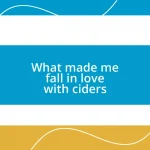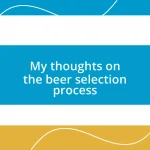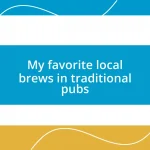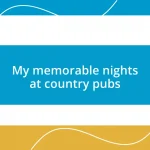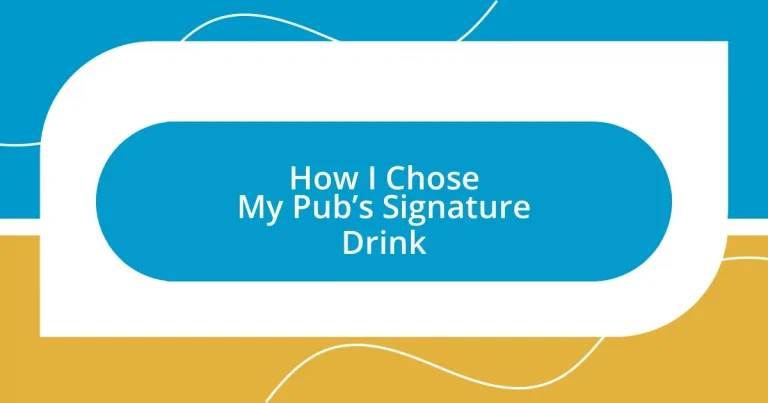Key takeaways:
- Understanding audience preferences through personal connections and story-driven experiences enhances beverage selection.
- Experimenting with unique ingredients and flavor combinations promotes creativity and sparks engagement among patrons.
- Effective marketing of a signature drink relies on storytelling, visual appeal, and fostering customer connections through shared experiences.

Understanding Audience Preferences
When thinking about audience preferences, I often reflect on the little conversations I’ve had with friends at the pub. Everyone has a story about their favorite drink, whether it’s a classic pint of lager or an adventurous craft cocktail. It makes me wonder: what draws people to specific beverages? Is it nostalgia, flavor, or perhaps the ambiance of the place?
I remember a particularly lively night out when a friend raved about a unique gin blend. Her passion for it was infectious, and it got me thinking about how personal connection shapes what we choose to drink. Do we pick our drinks because they tell our story or reflect our mood? For many, it’s the comfort of familiarity or the thrill of discovery that guides these choices.
Exploring these preferences can be an insightful journey. When I see someone excited about trying a new drink, it sparks my curiosity—what will they think of it? Their reactions can vary from pure delight to utter disappointment, and each of these moments helps me understand the diverse spectrum of tastes and how closely they relate to individual experiences. It’s a thrilling dance of flavors and emotions that deepens my appreciation for the art of crafting a signature drink.
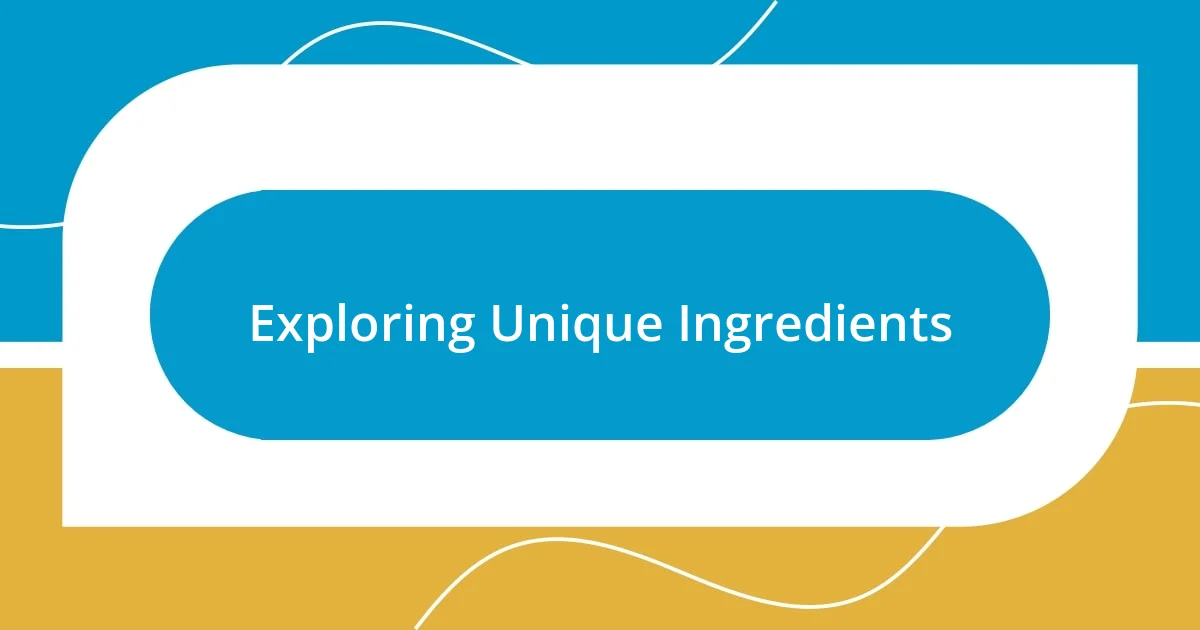
Exploring Unique Ingredients
The journey of discovering unique ingredients for my pub’s signature drink always feels like a delightful treasure hunt. I vividly recall a night spent perusing a local farmer’s market, where I stumbled upon a vendor selling exotic spices. My curiosity was piqued, and I suddenly imagined how a dash of sumac could transform a simple cocktail. This moment propelled me to experiment with unconventional flavors, leading me to mix traditions and explore possibilities beyond the usual suspects.
Here are some unique ingredients I found impactful in my drink creations:
- Sumac: Adds a tangy flavor that elevates gin-based cocktails.
- Activated Charcoal: Offers a visually striking element and a unique texture.
- Lavender: Introduces a subtle floral note that’s both soothing and sophisticated.
- Szechuan Peppercorn: Brings an intriguing spice with a hint of citrus.
- Beet Juice: Provides a vibrant color and earthy sweetness.
Every ingredient tells a story. It’s not just about taste; it’s about creating an experience that resonates with people. When I blend unusual elements, it often sparks conversations among patrons, making them engage with their drinks in a way that feels both exciting and personal.
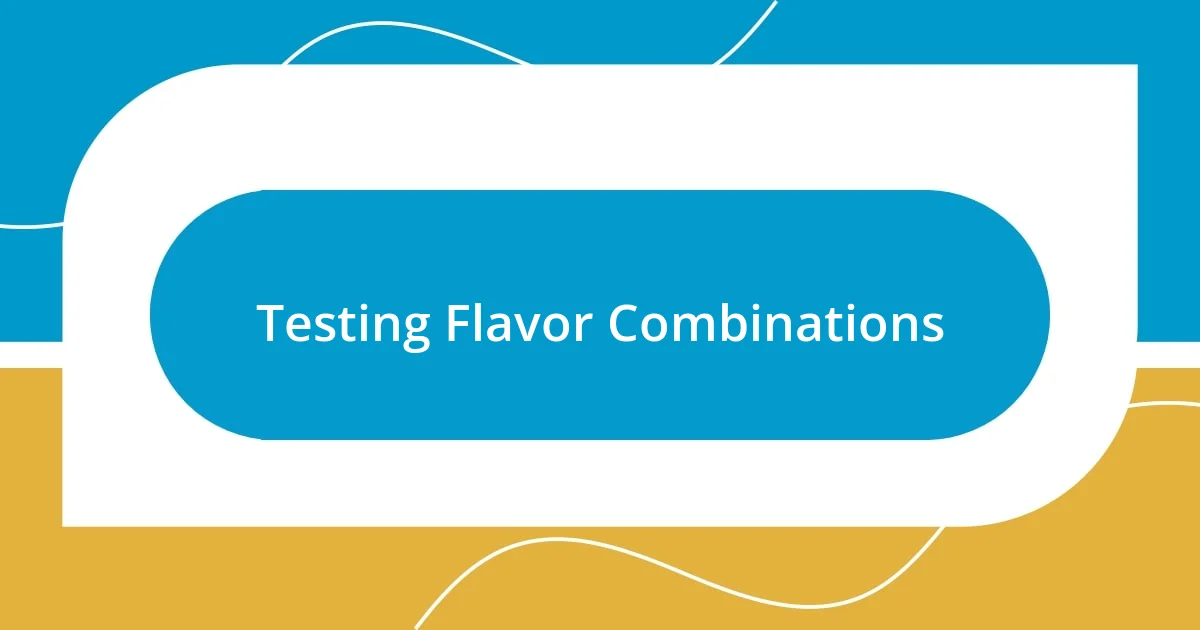
Testing Flavor Combinations
Testing different flavor combinations can be a thrilling yet challenging experience. I distinctly remember the first time I decided to mix flavors that I initially thought didn’t belong together. Inspired by a whimsical recipe I stumbled upon, I created a cocktail with rosemary and watermelon. When I took that first sip, the refreshing sweetness danced with the earthy herbaceous notes. It left me thinking—what else could I discover through the right pairings?
In my exploration, I’ve found that sometimes the most unexpected combinations yield the best results. For instance, I once paired jalapeño with pineapple in a drink. My initial hesitation quickly vanished when my friends eagerly volunteered for a taste test. The heat of the jalapeño met the sweetness of the pineapple in a way that surprised everyone, creating a drink that was both bold and memorable. It’s fascinating how flavor profiles can surprise and delight us, pushing us outside of our comfort zones.
To truly appreciate the artistry of mixing flavors, I created a comparison table to evaluate my findings. This helped streamline my thought process and analyze which combinations worked best. I invite you to explore some combinations I’ve tested and how they fared in my taste tests:
| Flavor Combination | Outcome |
|---|---|
| Rosemary + Watermelon | Refreshing and balanced |
| Jalapeño + Pineapple | Bold and unexpected |
| Lavender + Lemon | Floral and uplifting |
| Beet Juice + Gin | Earthy and visually striking |
| Spicy Ginger + Pear | Spicy and sweet |

Designing an Appealing Presentation
Creating an appealing presentation is essential when serving a signature drink. I remember one evening when I was setting up for a special event; the way I garnished the drinks transformed them into a true visual feast. A cocktail adorned with fresh herbs and an edible flower didn’t just look beautiful—it sparked intrigue and excitement among my guests. They couldn’t resist sharing their thoughts and diving into conversations about the flavors, enhancing the overall experience.
In my experience, the glassware you choose can elevate the drink’s atmosphere. I often opt for uniquely shaped glasses that match the character of my cocktails. The first time I sipped a drink from a beveled highball glass, I felt an immediate sense of sophistication. The connection between the drink’s aesthetics and its vessel is undeniable; it’s like dressing your drink for an occasion. Have you ever noticed how the right glass can elevate even the simplest of beverages?
Lighting plays an equally crucial role in presentation. A dimly lit space can create an intimate vibe, allowing the colored layers of a cocktail to shine. I once experimented with candlelight and vibrant drinks—it was magical. The flickering lights danced off the glass, enhancing shades of vibrant beet juice and luminescent lavender. It reminded me of how much our surroundings influence our perception of flavor and enjoyment. Designing an appealing presentation is not just about looks; it’s an experience that envelops all senses, making each sip memorable.
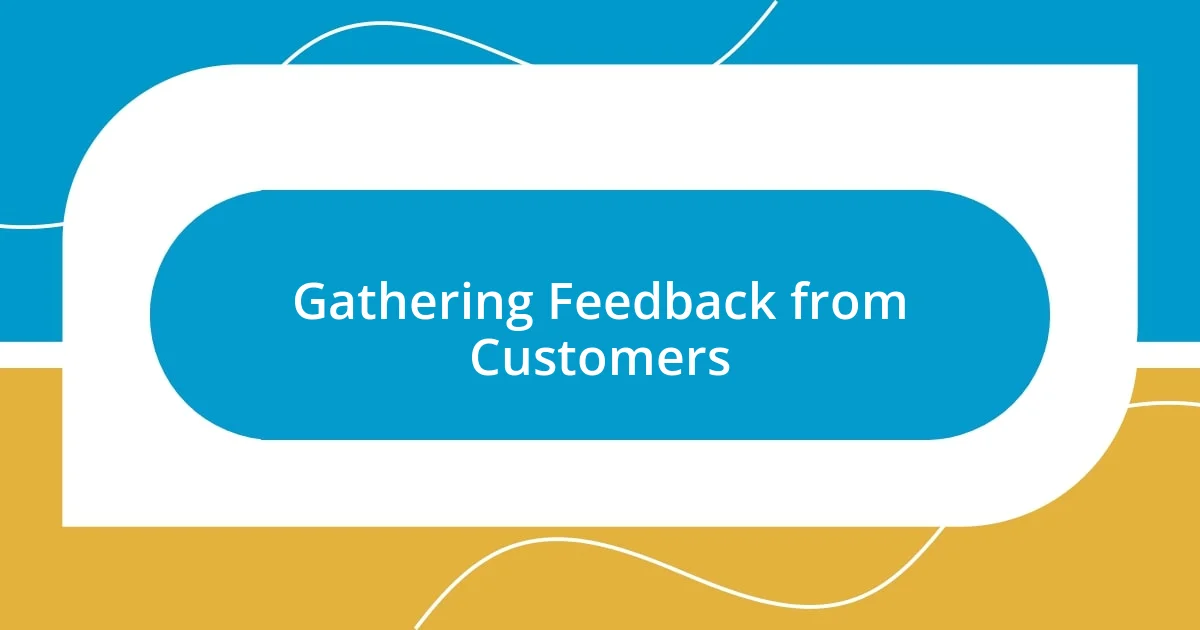
Gathering Feedback from Customers
Gathering feedback from customers became an essential part of refining my signature drink. I often found myself engaging patrons in conversation about the drinks they enjoyed most. One evening, I chatted with a table of regulars who had ordered my latest cocktail creation. Their lively discussion about the drink’s flavor and presentation helped me understand what truly resonated with them, turning their insights into tangible improvements.
From my experience, creating a casual ambiance encourages honest feedback. After introducing a new drink, I set up a small whiteboard asking patrons to jot down one word to describe their experience. The act of participating made them feel invested, and the diverse responses I received highlighted key elements that resonated with different tastes. One guest’s “zesty” contrasted beautifully with another’s “smooth,” illustrating how subjective taste can be.
I remember a particularly special night when a customer approached me, excitedly explaining how the drink reminded them of a cherished summer vacation. Their face lit up while sharing the memory, and it struck me how a drink could evoke such powerful emotions. It made me realize that gathering feedback wasn’t just about flavor; it was also about crafting experiences that connected personally with people. So, how do you think your patrons’ stories can shape the evolution of your drink menu?
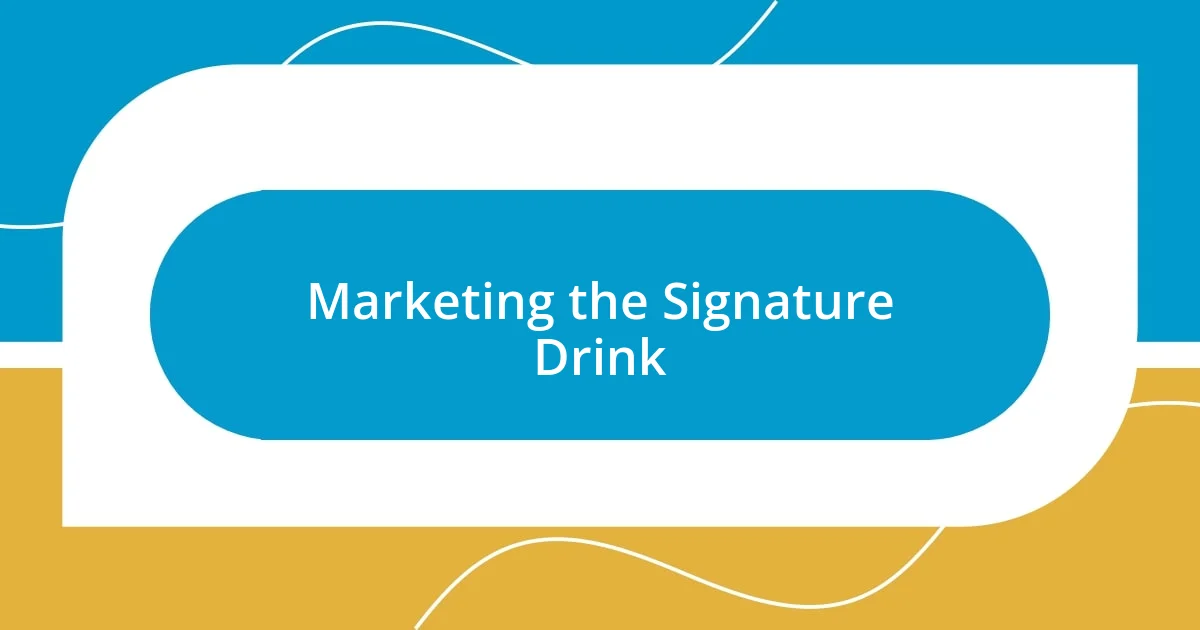
Marketing the Signature Drink
Marketing a signature drink extends beyond just flavor; it’s about storytelling and engagement. I recall launching a new drink and deciding to host a small tasting event. As I shared the inspiration behind the ingredients, I noticed how people’s eyes lit up. They weren’t just sipping; they were connecting with the drink on a personal level. Have you ever experienced that moment when a story makes you appreciate something more?
Social media has become a powerful tool in promoting a signature drink. After I posted an eye-catching photo of my new cocktail, the feedback was immediate. Friends and patrons alike started sharing it, tagging the pub, and discussing their own experiences with the drink. It reminded me how visual appeal, paired with a story, can create a buzz that brings more customers through the door. Isn’t it fascinating how a single post can create such a ripple effect?
I learned early on that collaboration can amplify marketing efforts. I partnered with a local bakery to create a dessert that paired perfectly with my drink. The synergy between our offerings not only drew customers but also created an inviting experience. When I saw guests enjoying the pairing and discussing it with each other, it reinforced the idea that marketing is about creating shared moments. How often do we underestimate the power of connection in our marketing strategies?

